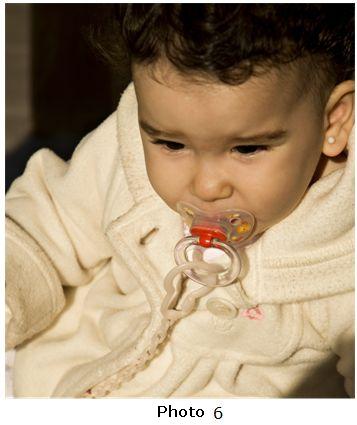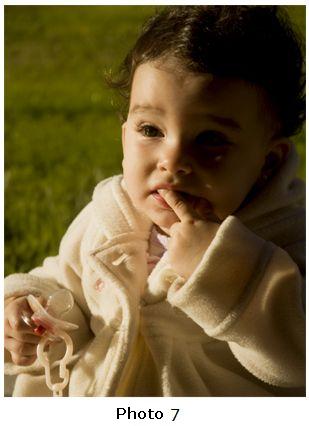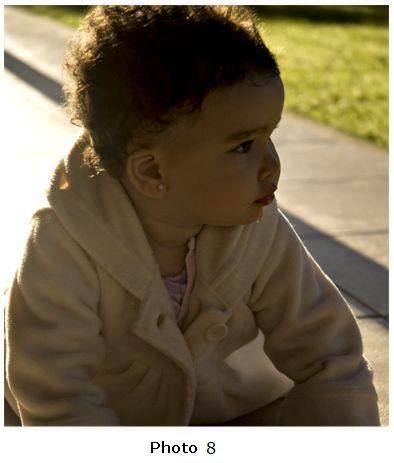Dusk and Dawn
We will see 3 different photographs taken on the same day, at dawn. It is the same model. The only thing I changed was changing her position in regards to the sunlight.

in this picture, she is facing the sun, just as it was rising. You can see that the photograph has a warm tone.
When we put the model facing the sun, we illuminate her face completely. However, we generally a problem: for the model (if we are shooting people, of course) has a difficult time keeping his/her eyes open. The sun hits their face directly making them frown most of the time. This wouldn't be a problem if we were shooting a landscape or objects, of course.

This photograph was taken just after the other one (photograph 6).
I placed the model sideways in relation to the position of the sun. Consequently, half of her face is illuminated by the sun while the other half has shadows.
This is the most dramatic type of illumination because it generates shadows in the face. The darker the shades are, the more dramatic the photograph looks.
Light coming from the side is also a type of illumination used quite often to highlight texture. As you can see, the light also has a warm tone.

This photograph was taken with counter-light. What does this mean? It means that the person has his/her back to the source of light (in this case, the sun). In other words, light is coming from behind the object or subject.
The purpose of using this type of illumination is to make the subject separate from the background. Some sort of light halo forms around the contour of the object/subject.
In this case, I didn't use anything to fill her face because I wanted it to come out a little dark. I did not want to see all the details; I was looking for a sensation rather than a look. If we do not want her face to be so dark, we can use a surface to reflect light (see the previous course).
However, shooting photographs at dusk or dawn can have some problems. You need to consider that light still has a low intensity. This means we might have to use a tripod to achieve a great depth of field or to control movement. If you don't want (or can't) use a tripod, you can use a higher sensitivity.
We also need to bear in mind that light, at that moment during the day, varies rapidly. This means we need to be ready and take the majority of pictures in a short period of time. Since Light changes rapidly, we need to measure the scene often using a photometer to make sure we expose the photograph correctly. We don't want to get under-exposed or over-exposed photographs.
My advice is that if you like shooting photographs during this time of the day, you need loads of practice. You need to be ready for anything.

